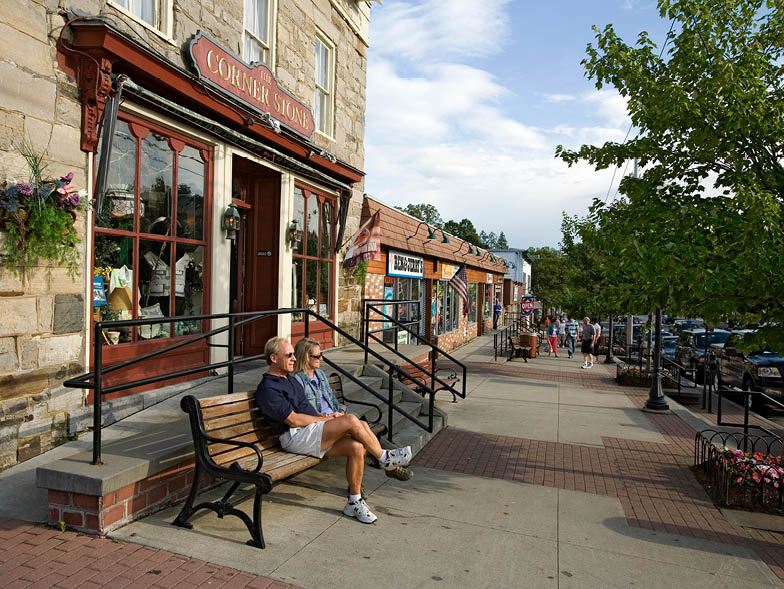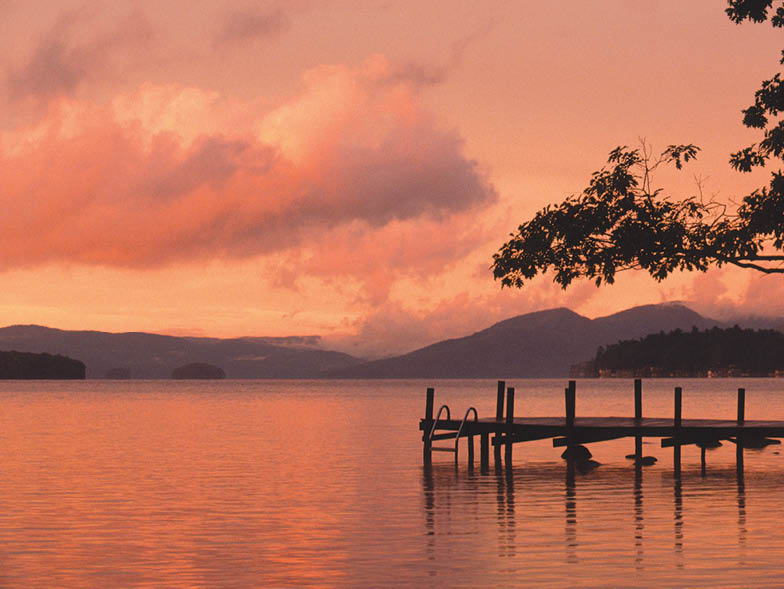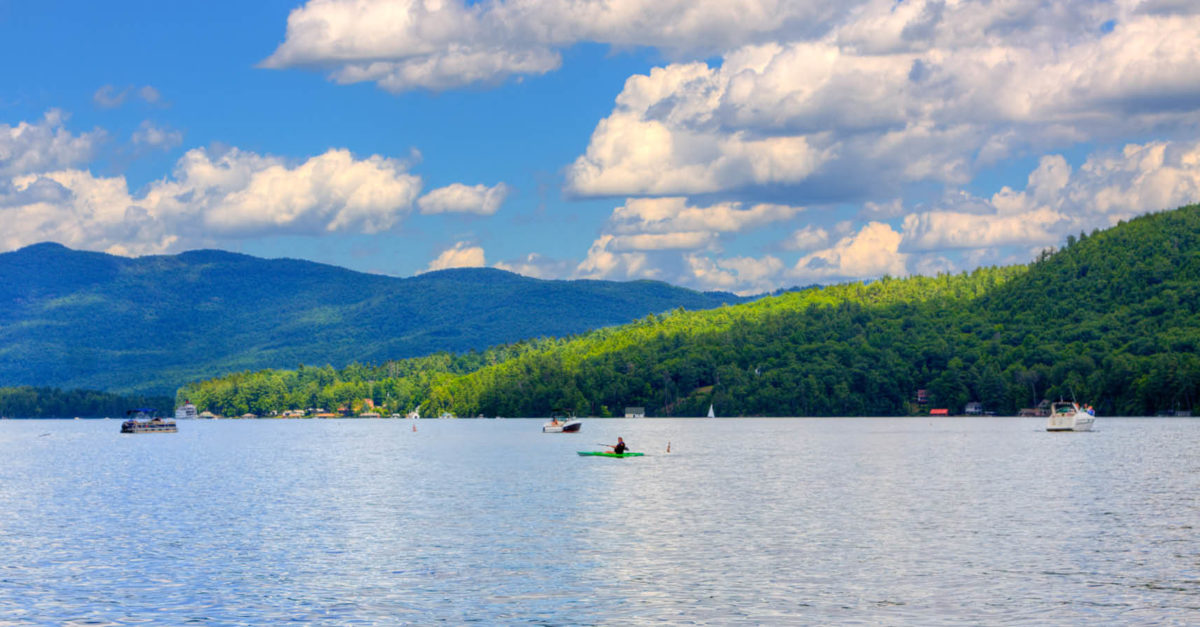Once More to the Lake
When it comes to getting away from it all, some people prefer the beach and some the lake. I’ve been fortunate enough to live in equal proximity to both lakes and the ocean—and, although I have enjoyed both, I’ve always preferred the ocean.
That is, until I visited Lake George, New York.
These were the thoughts that danced in my head while my wife, Sandra, and our kids, Jeff and Laura, were buckling up for our return trip to this haven in northeastern New York State.
During the four-hour drive, much of which takes place on scenic I-87, I had plenty of time for more reflection on the adventure that awaited. Only three hours from Montreal and situated in the Adirondack Park, the largest publicly protected area in the contiguous US, the lake itself is unique in many ways. It’s a huge body of water, about thirty-two miles long and, at its max, about 200 feet deep (with shipwrecks at the bottom of the lake to boot). It boasts over 175 miles of shoreline and over 180 islands, all of which add to the grandeur of this place dubbed the Queen of American Lakes.

I also took time to appreciate that Lake George holds a vital place in US history. Both George Washington and Thomas Jefferson visited there (with the latter calling it “without comparison, the most beautiful water I ever saw”). In addition, it was a key battleground during the French and Indian War, and it’s the inspiration for the setting in The Last of the Mohicans.
Before I knew it, I was making the familiar turn onto Route 9, which welcomes you into the village of Lake George. Famished, we headed straight to Giuseppe’s Pizzeria & Restaurant, which is located toward the north end of the village. After eating a light lunch and settling in at our hotel, we ventured down to Beach Road to play miniature golf at Around the World Golf, which is on several top ten lists as the best in the country.
It’s easy to see why. There are two courses: Around the US and Around the World. We did the American course during our prior visit, and it was a blast. The coup de grâce is the final hole, New York, which features a subway station—complete with turnstiles and graffiti-splashed walls—that you have to walk down into. This time around, we did the international course, which features icons such as the Pyramids of Giza, a torii gate and temple bell, and a hole shaped like a Spanish guitar.

After golfing, we crossed Beach Road and walked along the lake. We considered going southeast, which would have landed us at Million Dollar Beach. Located at the southernmost part of the lake, it’s where the kids and I had swum the previous August—and where I was first captivated by the clear, calming water of Lake George. With a chill in the air, we instead headed northwest toward town. At sunset, the lake seemed even more intoxicating than I remembered. The sun blazed over the mountainous horizon, making the vast, translucent lake sparkle.
At any time of day, though, the lake is peaceful and mesmerizing—with good reason. Formed over 10,000 years ago when a glacier blocked two rivers, Lake George holds about 550 billion gallons of water. It’s also constantly refreshing itself, with over 50 percent of the water coming from streams and almost 20 percent from groundwater. As a result, you experience a lake with crystal clear water—so clear, in fact, that it’s been classified as drinking water.
As we continued on our stroll, we watched one of Lake George’s famous cruise ships, the Minne-Ha-Ha, meander away from its dock with happy tourists. One of five authentic paddle wheeler steamboats still in existence, the Minne-Ha-Ha is run by the Lake George Steamboat Company, which celebrated its 200-year anniversary in 2017.
As I made a mental note to schedule a steamboat cruise, we continued making our way toward the village’s main road, Canada Street. It was now nearly dark, and the breeze seemed to follow us everywhere. We spent some time at Shepard Park, a central hub that hosts nightly concerts and weekly fireworks displays during the summer, and walked out onto its pier, which brought back memories of the previous year’s amazing fireworks show. It’s a sensational sight to see the glimmering pyrotechnics flying high and reflecting off the lake—and a wonderful way to end a night.

The next day, we drove to Prospect Mountain, one of the most popular destinations in Lake George. We turned onto Veterans Memorial Highway, paid the entrance fee (only ten dollars), and then started our incline upward. With our ears popping, we soon came to the first overlook, the Narrows, and parked. At this tree-lined area, we gazed at the mountains across from us on the other side of the lake.
The next two overlooks, Lake George Panorama and Eagle’s View, earn their names with spectacular, seemingly never-ending views of the entire area. We then reached the summit, parked, and boarded a shuttle, which takes you to the very peak of the mountain. Now over 2,000 feet in the air, we peered out at distances over 100 miles away. From this vantage point, we could see not only the entire Lake George village (looking like a diorama below us) but also New Hampshire’s White Mountains and Vermont’s Green Mountains. Awe-inspiring, to say the least.
After coming back down to Earth, we traveled south on Route 9 toward the Factory Outlets of Lake George, which boast over fifty stores, including L.L.Bean, Adidas, Banana Republic, and Harry & David. We weren’t there to shop, though (as we did during our first trip); we were there to eat at the Log Jam Restaurant.
This eatery has a charm unique to the Adirondacks, with wood throughout, dimly lit lanterns, and even cozy stone fireplaces. Besides its filling food, it also has an impressive salad bar as the focal point of the restaurant; in fact, Sandra and I filled up on the delicious salads and fixings before our meals even arrived. One thing that’s certain no matter where you eat in Lake George: you aren’t left hungry.
In fact, later that day, we experienced more filling fare when we ventured a few miles south to Martha’s Dandee Creme, named one of the top ten ice cream parlors in the country. Martha’s offers a dozen flavors each day, and the menu changes every few days, so you have dozens of options. Laura chose banana, while Jeff went for raspberry chocolate twist.

With surprisingly large serving sizes—their kiddie size is about the same size as most places’ large—it took a while to consume these cones. Jeff couldn’t finish his, so I gave it a taste; amazingly, it was like eating a fine piece of raspberry-filled chocolate, only in rich, creamy ice cream form.
The next day, we decided to have history repeat itself, so to speak. The year before, we had visited the nearby Fort William Henry Museum and were taken in by the living history of the place. We toured the complex for hours, watched demonstrations, witnessed cannons and muskets being fired, and learned a great deal about the fort’s vital role in American history.
This time, we decided to take a scenic, tree-lined drive north to Fort Ticonderoga. Driving along the western edge of the lake, we saw cottages dotting the landscape and witnessed breathtaking views of the lake and its islands (many of which are available to rent). We passed through the quaint hamlet of Bolton Landing, which features a historic opera museum and a Victorian-era hotel, and traveled for about twenty more miles until we reached our destination.
The star-shaped Fort Ticonderoga maintains an impressive array of cannons big and small pointed in various directions—reminding you of the many ways the enemy could attack. Inside, we witnessed living history demonstrations, toured barracks, and viewed many displays, most notably a large collection of eighteenth-century artifacts, including weapons, ceramics, and tableware. You can even try your hand at loading cannons and other artillerymen’s weapons.
With rain pelting us after we ate at the fort’s café, we decided to skip the hiking trails through the battlefield and instead walked through the raindrops to the King’s Garden, a walled colonial revival garden on the premises. The landscaping there features brick pathways, a reflecting pool, and a multitude of magnificent flowers; the flowers’ colors defiantly burst through this gray day. We also observed the Pavilion, a centuries-old historic structure that was once a summer home and a hotel; sat in a gazebo in its backyard overlooking Lake Champlain; and walked down to its dock at the edge of the lake. Before returning south to Lake George Village, we took a ten-minute drive to Mount Defiance, which provides a bird’s-eye view of Fort Ticonderoga.
On the day of our departure, we frankly didn’t want to leave—so we didn’t. (The same thing had happened the year before, when we shopped at the outlets and ate before heading home.) Even though our vehicle was packed to the brim, we spent more time at the lake, enjoyed the village again, and chowed down on more local cuisine, including another trip to Martha’s.
That, ultimately, is what Lake George does: it draws you in, compels you to kick back and enjoy the endlessly soothing, majestic lake, and makes you want to learn more every time you visit.
Even about yourself. I, for one, learned how much an oceangoer could be hooked by the lure of the lake.
For more info, visit lakegeorgechamber.com, visitlakegeorge.com, or fortticonderoga.org.






















